WWII GERMAN INFANTRY ASSAULT BADGE - SILVER AND BRONZE
The German military wanted to recognize the soldiers in the army who engaged in combat in the various fronts. An
award known as the Infantry Assault badge was developed. There were two basic classes created; the Silver and Bronze.
This section of the website covers the history of both pieces. In addition, multiple examples of each type are also
covered.
The different components that were used in the design of the badge are broken apart and identified. Note that these
parts do not come off in the real badge. Everything is stamped as a single piece. The following photo is merely
a graphical representation.
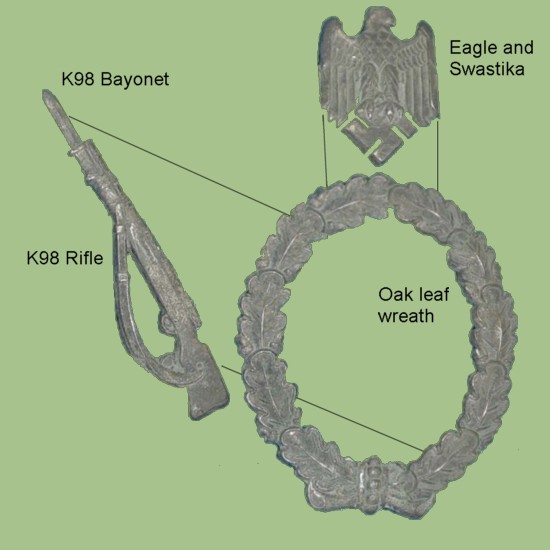
The designers of the Infantry assault badge used items that were important to the German military complex as well as
the people in general. The following is an outline of the items and the possible motivation for their use.
| OAK LEAF |
K98 bayonet |
Eagle |
Swastika |
K98 Rifle |
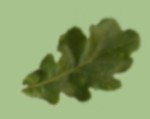 |
 |
 |
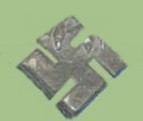 |
 |
|
The Oak is the national tree of Germany. Its leaves are used in the design of several military awards.
|
This was the standard bayonet for the German armed forces during WWII.
|
The eagle is a symbol of strength. The Germans developed a large variety of eagles for military and civilian
organizations.
|
The Swastika was chosen by Hitler as the symbol of the Third Reich. It was displayed in just about every military
and civilian award.
|
The K98 rifle was the standard rifle of German armed forces during WWII.
|
|
This page is a recognition and identification guide for WWII German badges and awards. Multiple
detailed photos of a specific sample are provided. Descriptions point out clearly defined points
that should be noted.
One of the most commonly asked questions is "How much is my WWII German badge worth?". A price
guide is included here to address this question. The value of the badges and awards is reviewed
over a period of several years. A trend can be observed. The present worth of the German
badges in the collector's market is illustrated.
This service is provided free of charge to the visitor/enthusiast courtesy of
MilitaryItems.com,
a company dedicated to the preservation of military history and to providing quality military
antiques and collectibles to museums, institutions and the general public.
|
|
SILVER INFANTRY ASSAULT BADGE
The Silver Infantry Assault badge was instituted on December 20th 1939 following the orders of Von Brauchitsch.
It was designed by the company C.E. Junker in Berlin and it was produced in silver and bronze.
The bronze badge was issued to soldiers belonging to the infantry and mountain infantry.
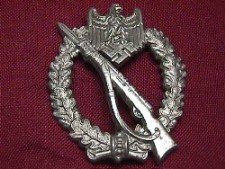
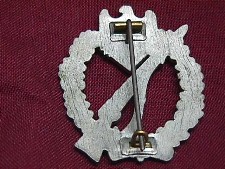
BADGE REQUIREMENTS FOR SILVER VERSION
The main purpose for this award was to reward troops who participated in combat activities. The criteria for earning
the award was defined in the following table. Note that the criteria listed here only applies to the Silver Infantry
assault badge.
 |
Rules for awarding the Silver Infantry Assault badge.
| 1 |
The soldier must participate in a minimum of three attacks. |
2 |
Engage in hand to hand combat during the assault on a position. |
3 |
Participate in three or more armed reconnaissance missions. |
| 4 |
To have taken part in three or more counter attacks. |
5 |
To participate in three different days in the restitution of combat positions. |
6 |
To engage three or more times in a combination of activities 1 and 4. |
|
 |
|
The award was normally issued by the regimental commander and was worn on the lower left portion
of the tunic.
Several manufacturers produced this badge and it was distributed in large quantities, making it one of the most
common and readily available awards of the Third Reich. However, this has not proven to be a deterrent to the
makers of reproductions. There are a lot of fakes out in the market.
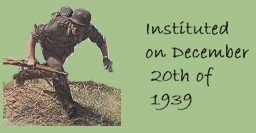
The Infantry Assault Badge was issued to members of the armed forces for direct participation on battles.
There were two main classes of badges produced, Silver and Bronze.
In addition, there were variations within the classes known as numbered badges. These awards had a number
at the bottom of the badge to indicate the number of battles where the soldier took part. The available numbers were
25, 50, 75 and 100.
|
The award was normally issued by the regimental commander and was worn on the lower left portion of the
tunic.
Several
manufacturers
produced this badge and it was distributed in large quantities, making it one of
the most common and readily available awards of the Third Reich.

|
The "Military minute" is a series of instructional videos created by MilitaryItems.com for the purpose of
providing basic information about military collectibles. The idea is to expose people to the exciting
world of military collectibles.
The video presentation coupled with detailed photographs and written information, including a military
collectible's price guide, and anatomical breakdown of each piece enhances the visitor's experience.
Whether you are a long time collector, a beginner or simply have an interest in the history and value of
each collectible, we hope that you find the information presented here useful.
|
The Infantry Assault Badge was issued to members of the armed forces for direct participation on battles. Different classes of this badge were produced depending on the number of battles.
The badge consists of an oval shape wreath. With a large eagle residing at the top of the wreath. A
K-98 rifle
crosses the entire oval at an angle. The rifle has a
bayonet
affixed. The butt stock and the tip of the bayonet extend beyond the perimeter of the wreath. The eagle
has the wings retracted. The head is facing to the right. Very nice detailing to the plumeage. The
eagle is clutching a swastika.
A vertical pin
is hinged at the top of the badge. A catch is attached to the bottom portion, securing the pin
shut. The award was worn on the tunic by passing the pin through loops (two or more) sewn onto
the jacket of the recipient.
THE BRONZE INFANTRY ASSAULT BADGE
This award was also designed by the C.E. Junker company from Berlin. This was a well known maker of combat
badges during the Third Reich. The award was instituted by order of Von Brauchitsch. The date was June 1st
1940.
The following photos show the front and back of a Bronze Infantry Assault badge.
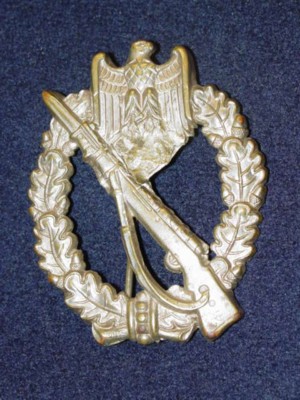
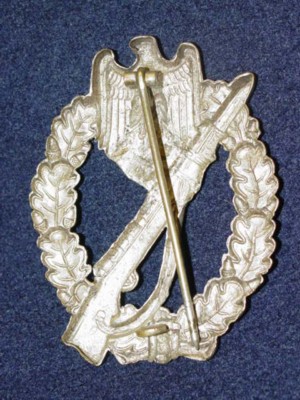
The design of the badge was the same between the Silver and Bronze types. The only difference being the color.
AWARD REQUIREMENTS FOR THE BRONZE INFANTRY ASSAULT BADGE
The main purpose for this award was to reward troops who participated in combat activities involving motorized
vehicles. The criteria for earning the award was defined in the following table. Note that the criteria listed here
only applies to the Bronze Infantry assault badge.
 |
Rules for awarding the Bronze Infantry Assault badge.
| 1 |
The soldier must participate in a minimum of three motorized infantry assaults. |
2 |
Engage in hand to hand combat during the motorized assault on a position. |
3 |
Participate in three or more motorized reconnaissance missions. |
| 4 |
To have taken part in three or more motorized counter attacks. |
5 |
To engage three or more times in a combination of activities 1 and 4. |
|
 |
|
The award was normally issued by the regimental commander and was worn on the lower left portion
of the tunic.
Several manufacturers produced this badge and it was distributed in large quantities, making it one of the most
common and readily available awards of the Third Reich. However, this has not proven to be a deterrent to the
makers of reproductions. There are a lot of fakes out in the market.
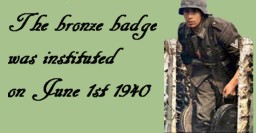
The Infantry Assault Badge was issued to members of the armed forces for direct participation on battles.
There were two main classes of badges produced, Silver and Bronze.
In addition, there were variations within the classes known as numbered badges. These awards had a number
at the bottom of the badge to indicate the number of battles where the soldier took part. The available numbers were
25, 50, 75 and 100.
|
COLLECTING INFANTRY ASSAULT BADGES
Collecting Third Reich memorabilia is a field that has been growing since the days the GI's rummaged around
Europe bringing back military souvenirs. German soldiers wore many of their awards on their uniforms when they
went to battle. Once the soldier was killed or captured, the American soldiers would take the awards as war
trophies. Eventually all these pieces came back to the United States where military history enthusiasts began
to collect them.
|
"I am trying to figure out if I should get into collecting Infantry Assault badges."
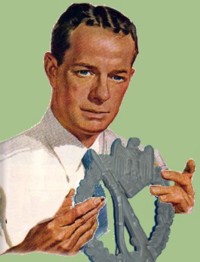 |
Determining which military badges to collect can be a challenging decision. The combination of availabiilty and
cost will often set the pace of what can be collected.
The adjacent table outlines some of the advantages and disadvantages of collecting the Infantry Assault badge.
|
|
 |
| INFANTRY ASSAULT BADGE VARIATIONS |
The Infantry Assault badge was produced by several manufacturers and in different configurations. It is a good
idea for a collector to be familiarized with as many versions as possible. This practice will help you
distinguish between real or reproduction. The following section displays some of the different types of badges
that were produced.
This award is currently being
reproduced.
It is becoming more difficult to be able to tell the fake ones from the real ones because the quality
of the reproductions is improving. The collector must become familiarized with the construction style
and materials employed in the manufacturing of this badge. Attention to the details is critical in
order to be able to determine the authenticity of the badge.
If you have an interest is seeing other badges and awards of the Third Reich, you can do so by going
to our
WWII German Badges and Awards
identification guide. Where we cover Heer (Army), Navy (Kriegsmarine) and
Air Force (Luftwaffe) items.
| 






